Breathing Easy: The Cost of Radon Mitigation and Your HealthRadon mitigation costs vary depending on the method used and your residential/commercial property size and design. If you're curious about the price of radon mitigation services in your area and what elements contribute to the cost, you've come to the right spot. Want to breathe easy and keep your lungs happy? Don't worry; we are here to simplify the process! Read on! Radon ExposureBreathing clean air indoors is not always possible by adding a few houseplants or increasing ventilation if there are dangerous radon levels in your space. Radon is odorless, colorless, yet deadly radioactive gas that seeps into your home unnoticed; the only way to determine radon presence or levels is by actively testing them. Long-term exposure to elevated radon levels causes dire symptoms like lung cancer, respiratory diseases, and even death. Since radon exposure is the second-leading cause of lung cancer in the U.S. after smoking, it is best to check the levels and mitigate them for the safety of you and those around you. Radon mitigation refers to the techniques used to lower the levels of radon gas in a residential or commercial building. Radon is a naturally occurring gas formed when uranium breaks down in the soil. Although radon is also present outdoors, high concentrations of radon indoors pose a health risk. To address this issue, the Environmental Protection Agency (EPA) recommends taking action and installing a radon mitigation system once radon levels reach 4.0 pCi/L or higher. Self-Test or Professional Service?You may have encountered the self-test kits for testing radon in your residential space to make it more budget-friendly. However, there are multiple things to consider before you opt for self-test kits-
It is the best and safest option if you are considering working with professionals. When it comes to experienced professionals, the tests to know your residential or commercial levels are simple, and mitigation systems effectively lower the amount of radon indoors to a less harmful level. How Much Does Radon Mitigation Cost?Whether it is active soil depressurization, passive depressurization, or adding a vapor barrier, radon mitigation services typically cost a few hundred to a few thousand dollars, based on the type of property you have, the number of foundations it has, the current radon levels, and the kind of mitigation you need. At Lifetime Radon Mitigation, we offer a customized system that is necessary to fit the unique needs of your home or business for optimal radon mitigation. Due to the individualized nature of these systems, it can be challenging to provide an exact cost for a radon mitigation system. However, typical costs for such systems can range from $900 to $1800, depending on the specific needs of your property and any additional installation requirements. Well, let's talk about the factors that can impact the price of a radon system. Things like electrical work, caulking or sealing, crawl space sealing, vapor barrier, or even sump pump replacement can all play a role. If your property doesn't have a dirt or gravel crawlspace, the radon mitigation system cost will likely be under $1,500. But, if your property needs a dirt or gravel crawlspace system installation, the costs can sometimes exceed that $1,500 mark. Are you looking for a radon testing and mitigation company that can give you peace of mind? Well, look no further than Lifetime Radon Mitigation! With our expert design and installation services, competitive pricing, and top-notch customer service, you'll feel confident that your home is in good hands. Why Choose Lifetime Radon Mitigation?
Contact us Today!We'd love to chat with you about our work and answer any questions you may have about our pricing. Don't hesitate to reach out to us today!
For more information about our mitigation services, click here.
1 Comment
 Crawl space encapsulation - Particularly for residences and commercial properties located within the American Midwest - is an excellent way to get rid of moisture and molds. These sorts of moistures and molds can cause elevated radon levels - which can, in turn, break down into radioactive particles with many health hazards associated with them. Factors to Consider When Calculating Crawl Space Encapsulation CostAs with any other job involved with the mitigation of dangerous radioactive particles, the cost of crawl space encapsulation for your property will greatly depend upon said property’s size, location, and the specific dimensions of the crawl space itself. Additionally, it will be vital to the project at hand to also consider the factors below as well. Materials When it comes to performing a crawl space encapsulation job for your property - and calculating potential cost beforehand - it is important you consider the materials necessary for the completion of such a job. These materials could, of course, include adhesives, foam, dehumidifiers, and insulation. Labor While collecting supplies together may involve hurdles of one kind - finding the right professionals for a crawl space encapsulation project is no easy task in and of itself. However, if you wish to ensure the job is done safely, efficiently - and in the most optimal manner possible - we would recommend you seek professional help - such as with us here at Lifetime Radon Mitigation. Crawl space size When calculating the potential cost of a crawl space encapsulation job - it is, unsurprisingly, essential to consider the size of the specific crawl space requiring encapsulation in the first place! This will help determine the amount of materials and duration/expertise of labor which will be involved on the job. Crawl space condition Along with the consideration of crawl space size - the actual condition of the crawl space itself will also be a huge factor involved in determining the cost of your crawl space encapsulation job. How much mold and moisture have built up there over time? This, of course, will help to determine both cost and duration. Inspection Prior to the actual performance of the crawl space encapsulation job for your property - an inspection will also have to be performed - to determine such factors as listed here. This will help professionals - such as us here at Lifetime Radon Mitigation - determine what, exactly, will be involved with the specific job. Waterproofing As opposed to waterproofing a crawl space, crawl space encapsulation requires no vapor barriers, which merely overlap over the floor. Encapsulation systems, on the other hand, cover the whole floor, walls, and even wood framing! As a result of this thorough encapsulation, a far stronger barrier is established - far more capable of warding off moisture, mold, mildew, and other such pests. Pest control Along with the mitigation of radon and mold - encapsulating crawl spaces is also a fantastic way of reducing pests which can populate the properties of those who work and reside in the area. Finishing The final factor to consider when attempting to calculate the cost of a crawl space encapsulation job is to ensure you are aware of the cost and duration of time it will take to finish the job - giving that crawl space encapsulation job the care and polish it deserves. Additional Costs and ConsiderationsAdditional costs and considerations to weigh carefully while planning a crawl space encapsulation job can include - but are certainly not limited to - any unforeseen damage within your crawlspace, inclement weather, the experience of the team performing the encapsulation in the first place - and, of course, high radon levels requiring the installation of radon mitigation systems. Average Crawl Space Encapsulation CostThe average cost for the completion of a crawl space encapsulation can run anywhere from $1,500 to $30,000 - however most property owners can expect around $15,750. Crawl Space Encapsulation Maintenance CostsThese crawl space encapsulation installation numbers, of course, do not include the maintenance costs associated with such systems. Indeed, in order to ensure the encapsulation stays encapsulated - a property owner will really have to stay on the ball. Frequently Asked QuestionsBelow, find a few frequently asked questions finally answered when it comes to crawl space encapsulation. Do I need a crawl space encapsulation? Yes, if you would like to mitigate the amount of mold, mildew, and other such pests accumulating within your property’s various crawlspaces. You and your loved ones’ health and safety could be at stake! Is crawl space encapsulation worth the cost? Also - yes. When it comes to the health, wellbeing, and safety of those who live, work, and/or otherwise pass through your property - there can be no limit to the cost. Is a crawl space encapsulation necessary? Particularly for property owners with properties located within the American Midwest, the mitigation of such radioactive, naturally occuring particles radon produces crawl space encapsulation an urgent necessity. What's the difference between a vapor barrier and insulation?
As stated above, while vapor barriers and other waterproofing solutions merely cover crawl space floors, insulation and encapsulation cover the floors, the walls, and even the wood paneling. Radon, a radioactive gas, naturally occurs under the ground. The problem is it can leak inside and get trapped indoors in Wisconsin. It is odorless, tasteless, or colorless and may cause severe health conditions over time. It is best to protect yourself and those around you from it, and testing for radon is the first step to ensure your exposure in your home/workplace/schools or any place you spend a lot of time in. Testing for radon is common when selling or buying properties, but especially since we spend so much time in our homes, schools, and offices, you and your loved ones should be safe. If you are wondering how you will know how often you should test for radon in Wisconsin, don't worry! Lifetime Radon Solutions has extensive experience and the best-licensed experts to help you with your doubts. Read on to know what you can do! EPA RecommendationsThe Environmental Protection Agency (EPA) advises biennial radon testing. At the EPA's recommendation, it's a good idea to start with a short-term radon test first - it can be completed in just two to three days. But if the initial test results show a reading of 4 pCi/L or higher, then the next step is to perform a long-term test, which will typically take at least 90 days and up to a year to provide an accurate annual radon concentration. Although radon testing is not mandatory or regulated in Wisconsin, it is helpful to test for radon to understand the levels where you spend a lot of time to avoid further health complications such as breathing issues, persistent cough, tightness in the chest, and lung cancer. Unfortunately, there's no way to reverse the damage caused by radon poisoning; however, we can help to prevent it from occurring by regular testing and mitigation. Can you Test for Radon Levels Yourself?You can check the radon levels in your home yourself with a radon testing kit that you can get from a hardware store. These tests may be performed over a specific period, and they will measure the average level of radon exposure in that period. However, these kits are not time-integrated, and considering the number of things that affect the radon levels, they may not show the most accurate results. For accurate results and further guidance, the EPA and we recommend hiring a qualified tester for your safety and those around you. How Frequently Should you Test for Radon in Wisconsin?Radon levels are forever in flux, and it is strongly advised to conduct both shorter and longer tests if you are looking for a precise reading. When considering seasonal changes and the average radon level, it is always best to check the radon level every two years for the most accurate result. Two years is the perfect amount of time for the levels to return to an average level, allowing you to get the most precise reading. This is especially important if you are interested in protecting the health and well-being of your family. A radon test every two years can give you the peace of mind to ensure the air quality in your home remains up to the highest of standards. Contact us Today! If you're looking for the best radon testing experts in Wisconsin, look no further – Lifetime Radon Solutions are here to help! We're passionate about providing our clients with the highest quality radon testing services and have years of industry experience.
With our team of experts at your disposal, you can feel confident that your radon testing needs are being taken care of by the very best. So don't wait any longer – call Lifetime Radon Solutions today and let us help you get the peace of mind you deserve. We look forward to hearing from you soon! Radon can be a dangerous substance, particularly inside structures such as multi-family apartments. Radon 222, which originates in the uranium decay chain, is the radioactive particle causing radon gas problems in confined structures. These radioactive particles can subsequently get stuck in the lungs. In time, this lung radiation can turn into lung cancer. Why is it Important to Test for Radon in Multi-family Apartments?As you can probably already guess – in order to mitigate the risk and ruin of radon-caused cancer – it is imperative for you or those who own and manage your multi-family apartment to test for radon and radon daughter particles. While it is possible to purchase either an home use active or passive radon detection kit via the hardware store in order to test for radon yourself, the Environmental Protection Agency (EPA) recommends hiring qualified, professional help (such as the services Lifetime Radon Solutions, Inc. provides) – particularly in the circumstances of either buying or selling your multi-family apartment. Common Radon Testing MethodsRadon water testing Radon is a soil gas, meaning it is highly present in the soil underground and ultimately the water table. If you are on a private well or source your water from groundwater outside of a municipal water source, it is extremely important to test your water for radon. Real estate radon testing As the EPA recommends, radon testing is crucial at any time – for the continued health and wellbeing of those residing in your multi-family apartment complex. However, radon testing becomes even more of a crucial health and safety factor on occasions when you are either buying or selling such apartment complexes, especially with multi-family loan contingencies. This way, you as a seller can reassure potential buyers all safety precautions have been taken. From the buyer’s point of view (and also the lender), this can only bring a renewed sense of peace of mind. Long-term radon monitoring Long-term radon testing is especially important if a short-term radon test has already taken place and the radon levels are at or near the EPA action level. Moreover, because long-term radon testing averages more data points over a longer period of time, long-term testing is considered the most accurate form of radon testing. The downside of long-term radon testing is of course the time constraint. In certain situations, like real estate transactions for instance, time is of the essence and one may not have at least 91-days (the minimum amount of time to be considered “long-term” for radon testing). How do I know if it’s in my home/apartment? Again, while it is possible to purchase various kinds of radon detection kits from your local hardware store, the EPA still recommends you seek out professional radon detecting contractors. This is where companies like Lifetime Radon Solutions, Inc. come in. Utilizing our employees’ professional training (and equally professional grade equipment!) – we are able to detect radon in a far safer, rapid, and more reliable manner than you ever could on your own. Frequently Asked QuestionsWhat is a safe radon level? Radon is measured in picocuries per liter – otherwise known as pCi/L. According to the EPA, radon levels of 4 pCi/L or higher are hazardous to health. However, it is important to note even radon levels less than 4 pCi/L can still pose a risk. This risk can be mitigated by such professional grade equipment like radon mitigation systems – but even in such cases where these systems are deployed – it can remain difficult to reduce radon levels below 2 pCi/L. What are the symptoms of radon in your home/apartment?
As health symptoms can vary from person to person – even before persons residing in your multi-family apartment complex begin to show signs of coughing, impacted lungs, or even having difficulty breathing at all – it is imperative you seek out professional radon testing, detecting, and mitigating help – as soon as possible! Lifetime Radon Solutions has worked for more than 25 years and has experience with well over 25,000+ high-quality residential installations ultimately making Wisconsin homes safer from radon gas. We understand your worry about keeping your family safe, and in this blog post, we want to share some information about radon and how to reduce radon levels in your residence. Understanding the Risks of Radon GasRadon is a naturally occurring gas that seeps in from cracks under the residence and gets trapped indoors. Although it is odorless, colorless, and tasteless, what makes this gas deadly is its radioactive nature which has a not-so-silent effect on one's health. It takes time to develop reactions to this gas, but when talking about health issues like breathing problems, lung cancer, and affected immunity, it is better not to wait for years till your health problems appear. Identifying the Potential Sources of Radon Gas in Your HomeRadon can be present in indoor spaces due to various sources. The most common source is the soil underneath the infrastructure. Building materials, water supply, natural gas penetrations, plumbing and pipe penetrations, and cable penetrations can also be potential sources of radon entry into your home. Radon gas can be drawn into a house from the ground due to the typically lower indoor air pressure compared to outdoor air pressure. It builds up in the air indoors without causing any sensory alarm and, over time, causes health issues. Regularly Monitor and Test Radon LevelsUnfortunately, there is no way of predicting radon levels, and comparing it with neighbors may be wasteful as levels vary from area to area and home to home. So, how does one know the radon levels in their homes? You can get radon testing kits to check the levels. But, given the complexity and dangers of this gas, it is better to get professional help with radon testing and mitigation. We at Lifetime Radon Mitigation serve you all year round. Our certified staff and technicians can answer any queries you may have. We value your health and will give you detailed information about our testing and mitigation process, tips about what to do in the future, and other recommendations. Getting a Radon Mitigation System InstalledInstalling a radon mitigation system will help you maintain lower radon levels. Our certified professionals can help recommend the best space for installing a radon mitigation system. In case of a leak, it is required to have fans in attics, garages, and/or outside locations. Moreover, it is important to retest your home every 2-years (even if you have a radon system already installed) to ensure a consistent reduction of radon levels. If you are concerned about retesting or wondering if it is time for a re-test, you can contact us and check on your concerns. Our team specializes in residential and commercial radon mitigation and radon testing; with us, you can be sure that you are getting the best advice based on your building type and classification. Why Choose us?We are passionate about helping homeowners and their families improve indoor air quality. It is our mission to help homeowners understand and identify radon issues. We suggest the best course of action based on the test results and make it cost-effective and efficient.
We make a lifetime difference with our extensive experience, approachable customer service, and competitive, fair pricing. For more information on our company values and reputation, check out - www.lifetimeradonmitigation.com/ The detection of radon in residential areas, particularly residential areas located in the midwest, is a pernicious issue. It is vital to you and your loved ones’ continued health and wellbeing that you ensure radon levels inside your home remain below the recommended EPA action level. If you’re not already aware, radon gas decays into radioactive particles – which get trapped in your lungs when you breathe. As they break down further and further, these particles release small bursts of energy. These small bursts of energy can damage lung tissue – leading to lung cancer. In fact, according to the EPA, radon continues to be the number one cause of lung cancer among non-smokers! If your home happens to be located in a state previously populated by glaciers and other ice formations (such as those in the Wisconsin) – these factors could raise your localized radon levels – as elements in water and ice can break down over hundreds, thousands and millions of years and ultimately release radon gas. We here at Lifetime Radon Solutions, Inc. have produced this brief, handy dandy guide to help you understand the risks of radon and how to safely, professionally detect radon levels. Tips on how to Know if Your Home has a Radon Problem Check the radon concentrationYou can check your home’s radon concentration either with a digital, continuous radon monitor or the older, more traditional passive radon detection kit. Check the water body beneath your home As the water beneath your home, or the water in your private well will contain some amount of uranium product (which can break down to produce radon particles) – this will be a likely area to check for radon particle concentration in water bodies around your home that you are likely to come in contact with. Contact a professional radon measurement specialist While, of course, it is possible to detect the radon levels in your home without professional help – it is advisable to seek professionals – with professional-grade equipment and training – in order to ensure the safety and efficiency of such a project. Test your home for radiation exposure Along with radon detection – testing the radiation exposure within your home can go a long way towards ensuring the continued safety of you and your loved ones residing in your home. Look for radon-leakage indicators Open sump basins, dirt, gravel crawl spaces, large cracks in the floor or open plumbing penetrations in the foundation and concrete can give direct access to radon into your home. These indicators can be subtle at first, of course, but with the use of either a digital radon detector or an analog radon detector kit – or even with professional help – these sorts of small indicators will be sure to pop up. Install a radon mitigation system Once you have determined the radon levels detected within your home are higher than the recommended EPA levels (or even if you would prefer to take precautions prior to this sort of event occurring within your home) – you may wish to consider installing a radon mitigation system. In this case, please do not hesitate to reach out to us here at Lifetime Radon Solutions, Inc. – as we just so happen to be professional installers of such necessary radon mitigation systems! Signs of radon you should never ignore Breathing issues Even without professional, digital, or passive radon detecting devices and systems – you may be able to get a sense of how the radon levels within your home are affecting your loved ones. One of these radon sickness symptoms include breathing issues! Raspy voice Along with breathing issues, family members may also begin to experience raspy voices – as the radon levels in your home begin to erode away their lungs and breathing capacity. Loss of muscle mass Your loved ones’ lung capacity will not be the only bodily system affected by the high radon levels inside your household, either. Losing muscle mass can also be a symptom of radon radiation sickness. Chest pain This goes without saying – but once one’s lungs are being slowly incapacitated by the high radon levels in your home – their chest could begin to show signs of pressure as well. Frequently Asked QuestionsWhat if the inspection reveals high levels of radon?
If high levels of radon are revealed within your home, we here at Lifetime Radon Solutions would recommend the immediate installation of a radon mitigation system. This way, you can ensure your loved ones are as safe as possible as quickly as possible. Where is radon most commonly found? Radon is actually found everywhere but can grow to higher concentrations in confined spaces like homes or other buildings. Every residential and commercial indoor space has radon, it is just a matter of how high the levels are. Should I test for radon myself? Again, while this is certainly possible, we here at Lifetime Radon Solutions would recommend seeking professional help for detection services – to ensure safety, efficiency, and the most reliable detectors possible. Is radon easy to detect? Yes, radon is very easy and affordable to detect. With professional testing equipment you can get results in as quickly as 48-72 hours. Professional radon testing equipment will also provide more data - like hour by hour concentrations, and things that may have affected the radon levels like barometric pressure readings, temperature and humidity. However, with passive radon devices, you do not typically receive all of this important data as a part of your report and it may take a bit more time for the lab to analyze the results. Typically lab results can take anywhere from 7-14 business days. Wisconsin, if you were not already aware, is one of the US states most at risk of higher than recommended levels of radon. This is because Wisconsin is a state that was filled to the brim with glaciers and other ice formations. These sorts of cold water formations had the tendency to break down and move land while also creating/leaving deposits of soil and rock formations that have arguably led to the release of higher than average levels of radon into the local area. The risk of radon radiation remains very real. In fact, radon gas itself decays into radioactive particles – which, in turn damage the lungs when humans breathe in. Breaking down further and further, these noxious radioactive particles release small bursts of energy ultimately leading to lung cancer. According to the EPA, radon has been the number one cause of lung cancer for non-smoking patients! In order to help you combat radon radiation exposure in your Wisconsin home, we here at Lifetime Radon Solutions, Inc. have prepared for you this quick guide – in order for you to be more prepared to protect your loved ones living and residing within your home. What are the Risks of Radon in Wisconsin? Indeed, as stated above – the state of Wisconsin (along with many other midwestern US states) – has a heightened risk of radon radiation due to the high number of glaciers and other ice formations that were located within the local area. These formations break down, producing radon gas, which in turn breaks down into radioactive daughter particles. Moreover, the energy efficiency construction practices in WI, adopted to keep homes warm during turbulent winters and cool during hot summers, ultimately trap the radon gas within the structure allowing it to grow to higher concentration than recommended for indoor air. Once in the lungs, these radioactive particles can break down even further into cancerous bursts of energy – which as you can imagine is extremely hazardous to health! How can you Prevent Exposure to Radon? In order to prevent and minimize your loved ones’ exposure to radon in the home – it is important to seek professional help. Professionals, such as Lifetime Radon Solutions, Inc., can start by safely, efficiently, and reliably detecting higher than recommended levels of radon in your home. Once higher levels are detected, we can also install a custom, comprehensive radon mitigation systems as well. What is the Treatment for High Levels of Radon? Recusing radon in residential structures is most often achieved through what is known as sub-slab depressurization. That is, the ability to create a negative pressure under the foundation of the structure that is greater than the natural pull of the home on the soil itself. While the concept is relatively simple, implementing the solution on each home can vary greatly depending on the homes construction. It is important to consult with a professional, certified radon mitigation contractor like Lifetime Radon Solutions, Inc. because building envelope science can be a tricky area to navigate as a homeowner. What if my House has High Radon Levels?If your house has high radon levels, it is important to consult with a certified mitigation professional because each home has its own unique set of circumstances. In addition to seeking out a certified radon mitigation contractor, it is also important to consider both industry experience and years in business as well. This is because knowledge about the dangers of radon has grown so much in recent years and many contractors, tradesman and even handymen have become “opportunity jumpers” - viewing radon mitigation and testing as a new source of income. Many times, while these contractors may have professional certifications, they do not have a good understanding of how to address radon in certain, difficult situations and in varying forms of construction. This leads to mistakes, injury and even higher radon levels of radon in some circumstances. Moreover, we receive phone calls nearly every day from homeowners that had a system installed improperly or the contractor who initially put in the system is no longer in business and cannot be reached. Lifetime Radon Solutions, Inc. has been in business since 1998 and has successfully mitigated well over 20,000 homes throughout WI and countless commercial properties in both WI and all over the country. While we strive to get better and learn new things each and every day, our mitigation technicians have seen most situations in the past and are experienced in addressing even the most difficult radon mitigation projects. Testing and Mitigation Strategies for Radon in Wisconsin Both radon testing and radon mitigation are not regulated by the state government in Wisconsin so many times we as professional contractors see very interesting and concerning approaches to both radon mitigation and radon testing. However, while there is no state certification, licensure or permit requirements for radon mitigation in Wisconsin, the WI Department of Health Services does recommend hiring a NRPP/AARST certified contractor. Our technicians are certified by AARST and the NRPP for radon mitigation and radon testing and we follow the national standards set forth by these accrediting organizations when implementing both radon testing and radon mitigation protocol. Frequently Asked QuestionsIs radon mitigation required in Wisconsin?
Radon mitigation is not required in WI but radon testing (and mitigation if the levels return above the EPA action level of 4.0 pCi/L) is highly recommended by the US EPA, the WI DHS, the CDC, the WHO and virtually every other health service organization worldwide. The consistent recomendation is to test EVERY residential home every 2-years even if you have already tested your home in the pasr or have a mitigation system already installed. This is because radon levels can change and vary greatly depending on an unpredictable amount of circumstances, not limited to remodeling, settling of soil under the foundation, landscaping around the home, and many home upgrades like better insulation and even new windows. The only sure way to know if you have a radon issue is to test your home. Where is radon most commonly found in homes? Because radon is a soil gas and also a heavier molecule, radon is most often found to be highest in the lowest level of the home. In most Wisconsin homes, that tends to be the basement area. However, if you live in a slab-on-grade home that does not have a basement, it is still VERY common to have elevated radon levels. Additionally, HVAC systems can spread radon throughout the home through the ducting systems and it is not unheard of to find radon in building materials - especially those with natural stone or masonry compounds. In some rare circumstances, these building materials can off-gas radon leading to detecably high levels of radon from these sources on upper floors. Lastly, if you have elevated levels of radon in your well-water, sometimes radon gas can be detected in the steam produced during a hot shower or bath. There are a number of different radon mitigation companies in Wisconsin and just like any other home service, choosing the right contractor can become daunting! Here are some tips and tricks to help determine which radon mitigation companies may be right for you.
Radon mitigation companies in Wisconsin do not need to have an industry specific, state licensure. When we explain this to customers, typically, they are beyond concerned. Most often I hear things like, “you are telling me I could hire someone that is drilling holes into my foundation and they don’t need to have any license or certification by law in Wisconsin?!” And the answer it yes, unfortunately that is true. In Wisconsin, if you wanted to start a radon company tomorrow, there are no industry specific licenses or certifications that are holding you back from doing so. Despite this, however, there are national certification boards that do issue radon mitigation and radon testing specific certifications. These certifications typically require classes, relatively difficult tests taken under strict supervision that must be passed prior to certification, as well as continuing education that must be completed every two-years to ensure the contractor is up to speed on any nuances and/or changes in installation or testing protocol. While there are no state laws or licenses required, the Wisconsin Department of Health does recommend that homeowners hire a “certified professional” and they do carry a database of the nationally certified radon pros that do business in the State of Wisconsin on their website. When choosing a radon mitigation company in Wisconsin, determining that they are a nationally certified contractor through AARST (American Association of Radon Scientists and Technologists) and the NRPP (National Radon Proficiency Program) would be the first place to start your vetting process. After you narrow down your list of nationally certified radon companies in the area, it is important to check with friends, neighbors or even family members and see if they have any recommendations. If no one you are very close with has had radon testing or radon mitigation performed, spread the word about the dangers of gas and check with your local realtors and home inspectors to find out who they may use or recommend. Typically realtors have to deal with radon contingencies in their transactions and they will have a pretty good idea of who are the good radon contractors in the area and who are the bad radon contractors in the area. Similarly, home inspectors inspect a lot of homes and many times perform radon testing themselves. Because of this, they see and inspect many radon systems on a daily basis and may even have some mitigation contractors they refer customers to when radon tests they perform come back elevated. Do not underestimate the importance of what I would call “first person references.” That is, referrals from people you know and trust. Once you obtain your first person references, compare that to your list of nationally certified radon companies and make sure the references you have received are also certified! After first person references, websites like Home Advisor, Angies List, Google and even Facebook are great 3rd party reference sties to check out because in this day and age, many people will share their experiences with these sources online. Moreover, these aforementioned sites are also a bit more strict in allowing/sifting out real reviews (particularly Angies List/Home Advisor). Once your short list of national certified radon contractors is vetted through both review sites and personal references, look into contacting those radon mitigation companies and be sure to ask some very specific questions. Take note of response times, who answers the phones right away, and any other customer service red flags that may help narrow your list further during the process. Below is a list of a few questions you should ask when vetting a radon mitigation company: 1. Do you carry insurance? Is so, may I have a copy of your proof of insurance? This is important because you can check to see if the insurance coverage they carry is acceptable for your project or property. Moreover, if they do not have insurance, its a pretty good indicator you should stay away from that particular radon mitigation contractor. 2. Do you use a licensed electrical contractor and do they pull the proper permit for the work performed? This is super important for a few reasons. The first is that while the State of Wisconsin does not have any certification or industry specific license requirements for radon mitigation contractors in WI, they do have electrical codes that must be met and followed. The code requires that an electrical disconnect be installed within 6-ft of the outdoor appliance and within the line of sight. It also states that any electrical work needs to be done by a licensed electrical contractor and requires a permit. By failing to pull a permit you could risk fines or even issues closing on your home if you are in a real estate transaction. Unfortunately, many radon mitigation contractors in Wisconsin do not use electricians or pull permits. In fact, most radon mitigations companies in WI do their own electrical work. This is a huge risk to you as a homeowner for a few reasons but mainly because as an unlicensed electrical contractor, if someone were to get injured or damage to the home occurred while performing electrical, the radon mitigation company’s insurance could deny the claim because they are working “outside of their scope of work.” The liability and/or damages to property could fall on you as a homeowner. Moreover, many contractors use “plug and play” solutions or low voltage vans. While this may seem appealing for cost savings reasons, we have found these options to be flawed for a few reasons. The first is that it is viewed as somewhat of a loophole in the industry and while Wisconsin currently does not have any state radon standards or requirements currently they are moving closer toward that everyday. Expect that many of those fans would need to be replaced should future legislation come to fruition. The second reason is failure rate. We replace more low voltage fans and “plug and play” fans within the first couple years in service than any other models. Additionally, most who replace them don’t want to deal with the fan going bad again so they opt to replace it with a traditional fan - which then requires electrical - and now the replacement cost is 2x the cost it would be with a traditional fan in the first place. 3. Does your service include a guarantee to lower the radon levels below 4.0 pCi/L and include a radon mitigation retest? If so, what type of retest is included - is it a do-it-yourself, 3rd party charcoal radon test or is it a digital retest done by the radon mitigation company themselves? Understanding guarantees can give you a lot of peace of mind and also understanding about the radon mitigation companies policies and procedures. Most quality radon mitigation companies in WI should guarantee the radon levels below 4.0 pCi/L. However, it is not uncommon for companies to not guarantee the levels below the EPA action level if the foundation isn’t properly sealed (as this is a deeper foundation issue) or if there are other foundational construction aspects like dirt and gravel crawlspaces that are not addressed during the 1st phase of the radon mitigation system installation. Moreover, understanding the type of testing post mitigation is extremely important, especially if you are in a real estate transaction. See our explanation on different types of radon testing options in our radon testing near me blog post. It is important to choose a company who’s post mitigation radon testing procedure work best for you and your situation. 4. What warranties come with the system and the components? Do you offer any warranties on your workmanship? This is an important issue to address and one that you should definitely get in writing. Warranties are only as good as the companies providing them so look at the amount of years the company has been in business and take that into consideration. We often get calls to service systems when they were installed by a radon mitigation company who is no longer in business or the contact number on the paperwork/system labeling is now disconnected. Most radon fan manufactures provide a 5-year manufactures warranty. Anything less than that should be a red flag and more than likely not a professional grade product. Menards and Home Depot often sell “homeowner grade” radon fans that only carry a 90-day warranty. Some contractors may grab these for convenience or in a pinch and install them as a contractor grade radon fan. This ends up coming back to bite you as the homeowner should you have a warranty claim! 5. Does your company have w2 employees or do you use 1099 contractors? Some companies have employees while others hire independent contractors to sub-contract the work for them. The issue with 1099 contractors is typically quality control, liability and unreliable communication. While I am sure there are good and bad companies on both ends of the spectrum, we have found in our experience that companies who hire employees rather than independent contractors stand behind their work, fix liability issues more diligently because there is more risk to their brand and reputation and answer communications more diligently as everyone works together under one roof. Moreover, theoretically, companies that hire 1099 contractors make their profit on up-charging the sub-contractors price for the job. This can, in some instances, lead to higher prices and poor quality as it is to the advantage of the prime contractor to find the least expensive sub-contractors and charge the highest price for maximized profits. Hopefully these tips will help you determine the right radon mitigation company for your project. Lifetime Radon Solutions, Inc. has been in business for just over 25-years and we have experience in tens of thousands of residential and commercial radon mitigation and vapor intrusion installations all over Wisconsin and much of the midwest. While I like to believe we are the best company in the country doing this work, I realize our methodology may not work for some homeowners, nonetheless, we wish to use our expertise in the radon industry to help you address this very serious concern. Whether you are looking for a radon company in Wisconsin or you live somewhere else, my team and I would love to offer help and guidance in the matter should you have any other questions about qualified radon mitigation companies! You may be asking yourself if radon testing is important in your area. Or maybe you have heard the buzz about the exposure of radon gas and you are asking yourself do neighbors or others in the area actually have radon mitigation near me? We have some answers to these questions and some of the answers might surprise you! Let’s start with understanding some basics about radon gas and why you should care in the first place. Radon gas is a natural occurring soil gas that is derived from the breakdown of uranium product present in the soil. Because it is derived from uranium, radon is highly radioactive. In fact, radon is the #1 source of radiation you will be exposed to during the course of your life! While radon is natural occurring and present EVERYWHERE around us (including the fresh, outside air) it can grow to higher levels in confined spaces like your home or workplace. It is estimated that the average outdoor radon concentrations hover somewhere between 0.3 pCi/L and 0.7 pCi/L while the EPA and other local health organizations place the indoor action level at 4.0 pCi/L. Interestingly enough, other health organizations outside the United States, have set the action level at 2.7 pCi/L. Therefore, after these “conflicting action levels” have arose, the EPA has since updated their action level guidance to say one should highly consider radon mitigation if there levels are between 2.0 and 4.0 pCi/L. However, to be clear, the current EPA action level in the U.S. remains at 4.0 pCi/L but those with levels between 2.0 and 4.0 pCi/L are highly encouraged by the EPA to take action as levels can also fluctuate from season to season. While all of the action level guidance is important and good to know, it is even more important to understand that no level of radon is known to be “good” or “healthy.” There is a lot of conflicting data online about this and many who claim that low levels of radon and radiation in general is somehow good for the body. While there isn’t much evidence to support this, there is a lot of compelling evidence to support the correlation that prolonged exposure to elevated levels of radon significantly increases the risk of developing radon related lung cancer. Moreover, it is also understood that many in the population, including children, have a propensity to be more sensitive to radon (and even other radiation exposure) and thus, may have an ever greater likelihood of cancer development under the same exposure as those without sensitivities. At the end of the day, I think it is important to look at the facts. The fact of the matter is, radon is considered a Class A Carcinogen meaning there is enough scientific data present to determine that it does cause cancer in humans. Is there radon testing near me?The simple answer to this question is yes - more than likely. The United States EPA recommends that every home be tested for radon gas. That is correct - every single home. There are a lot of misconceptions and even misinformation surrounding which homes should test for radon, however, there are way too may factors to consider and it is truly not possible to know whether a home has a radon problem or not without testing. In other words, the only way to truly know if you have a radon problem is to test your home. Thankfully, technological advances and the dynamic economy we live in allow for very affordable home radon testing options no matter where you live! In most cases, there are 3 different options a home or business owner has for testing their property: 1.) do-it-yourself radon test kits (typically through a 3rd party lab) 2.) professional radon testing done by a certified radon professional and 3.) home use continuous radon monitors. I believe there are advantages and disadvantages to all 3 options, however, what is most important is determining which is best for you and your situation and simply taking action no matter which you choose. Lets get to the pros and cons! At home, Do-it-yourself Radon Test Kit:The 2 advantages to these radon test kits are that they are very affordable and that they can be done virtually anywhere and anytime. If you are concerned and thinking, “I live in a secluded area, is there a radon testing professional near me?” Then this is an awesome option for you! If you live in a very rural area or somewhere that may be tough to find and hire a certified radon professional to test your home and you are looking for the most affordable option, you can easily order a do-it-yourself kit online for around $25! Further, the EPA also recommends that homeowners test their properties every 2-years or after any major renovations or foundation work (even if you already have a radon system in place). These test kits are great options for follow-up testing in these aforementioned scenarios because of their affordability and ease of use, especially if you already have a baseline radon test to compare to. The downside of these test results, however, is that you typically only get a simple “overall short-term average” and the test results will typically lack more advanced data and reporting that can give more information about your radon levels to you or a mitigation professional should you have an issue that needs to be addressed. Professional Radon Testing Near Me:If your you are in a real estate transaction and/or you want the most data available in terms of your radon results, this may be the best radon testing option for you! Most real estate deals that include radon testing will require a certified radon professional to do the testing. Moreover, professional radon testing monitors can typically give you more data to analyze like hour-by-hour averages, pressure changes in the home, temperature and humidity readings and even whether or not the radon testing unit was tampered with during the testing period. All of these factors help you or a radon mitigation professional determine important information like consistencies and/or inconsistencies in your radon readings and where those might derive from. On average, you are looking at around $125-$225 for a professional radon test but depending on where you live, it could be even more costly to find someone to come out to your home. The biggest downside of professional radon testing is it is a bit more expensive. Home Use Continuous Radon Monitors:Some brands have been around for awhile, but home use continuous radon monitors have definitely been on the rise in recent years and lots of new brands and models are available for sale on websites like Amazon or at other large retailers. In many cases, these monitors offer similar data to those used during professional radon testing BUT it is very important to note that these units are typically not certified for professional use and will most likely not be sufficient for real estate contingencies or other instances with formal testing requirements. Moreover, many homeowners find value in these monitors because in most cases they cost about the same as a single, professional radon test (on average about $125-$250 depending on the model) but you own it (so you can test/monitor your home whenever you want, wherever you want or even lend it out to friends or family). The last advantage to these home use monitors is that you can really get consistent, long-term data and long-term radon testing is considered the most accurate because there are more data points to average. The downside of home use continuous monitors is that they are not recognized in formal situations like real estate or HUD contingencies. Is there radon mitigation near me?Chances are yes, there are most likely radon mitigation systems installed near you! Radon mitigation is more of a concept or service than it is a product or one size fits all solution. While testing your home is the only sure way to know if you have a radon problem, many homeowners find value in walking the neighborhood to determine if there are radon mitigation systems installed nearby or in surrounding neighborhoods. The issue with this methodology is that many times, good radon mitigation contractors will work diligently to hide radon systems from the street view of the home in order to protect the aesthetics of the property. Some ways they do this is by placing them on the backside of homes or installing them internally—through garages and closets. This is not always the case, BUT many times when you see a 3” or 4” vent pipe sticking out of a garage roof, it is a pretty good indication that there MAY be a radon mitigation system installed in that garage. See the pictures below! The other reason that perusing a neighborhood is not a good solution to determining if your local area has a radon problem is because just as you may have been unaware of radon and its ill effects until reading this article, most people in your neighborhood probably are too! In fact, one statistic showed that as high as 80% of the population had no idea how serious radon in the air was for lung cancer development or lung health in general. Those are staggering numbers considering radon gas is estimated to be responsible for about 21,000 lung cancer deaths annually in the U.S. alone.
I think it is important to note that EVERY HOME has radon. Let that sink in. It isn’t a matter of “does my home have radon” or “does it not have radon,” it is more a matter of how high are my radon levels. The higher the radon levels, the higher the chances of developing radon related lung cancer. Understanding the data that is present and the facts about radon gas in your community are important but there is no alternative to radon testing your home. This is a great question and one that I believe is important to revisit periodically - especially after the Covid-19 pandemic, unprecedented inflation rates, labor shortages and supply chain issues on materials and building supplies. With all of those things considered, prices among most legitimate contractors in the radon industry have adjusted accordingly. The simple fact is, nearly everything that effects business has gone up substantially over the course of the last two years - insurance and fuel prices have also played a major roll in industry price increases to name a few others. Despite that, I think there is one thing that has remained a constant in the industry pricing model and that is how one should view the cost of mitigation—and that is 3-fold: the cost of initial installation, the residual energy cost of operating the system year over year, and the cost of maintenance and monitoring. The latter two, sadly, are many times overlocked by most consumers. Instant gratification is what is most typically considered during this important decision, but as my grandfather used to say “being cheap can be expensive.” The average radon system installation cost can vary greatly from home to home and region to region, however, in the present time, I feel comfortable giving most customers a range of somewhere between $1,000 and $2,000 for the initial installation of a standard radon mitigation system. To be clear, this cost range includes the system installation itself (piping, fan and labor), proper electrical installation, and any permits or ancillary fees associated with doing business. In the past, we used to give a cost range of around $800-$1,500 but as previously mentioned, many cost factors since the Covid-19 pandemic and global supply chain issues have greatly contributed to this increased cost range. What are some other factors that effect the average cost of installing a radon mitigation system?The construction of the home plays a major role in what the cost of installing a radon mitigation system will be. Homes with multiple foundations or homes with older foundations made of rock or stone can cost significantly more to mitigate whereas new construction homes with clean aggregate and interior drainage tile can cost significantly less. In Wisconsin, we see many older farm homes with fieldstone walls, dirt or gravel crawlspaces and even dirt basement floors all together. Since radon comes from rock and soil, these houses can be more challenging and laborious to mitigate! All of these factors can increase the labor and material rates on radon installation jobs causing the cost of radon mitigation to go above the aforementioned range in many of these instances. It is important that while the term “radon mitigation” is used interchangeably between both the service of mitigation and the system itself, if done properly, radon mitigation is not a one size fits all solution for every home - it is rather the concept of mitigating a radon problem and applying that may look very different from home to home. How does mitigating radon in a residential structure actually work?To understand the costs associated with radon mitigation, I think it is first important to understand the basics about radon mitigation itself, or the most common and effective form of mitigation used today which is known as sub-slab depressurization or active soil depressurization. Radon is a soil gas - meaning it is derived from the breakdown of uranium product that is present in the soil beneath and also around the foundation of the home. This gas gets drawn into the home through a pressure differential between the home and the soil. Just like water, radon finds the path of least resistance and if there is even the slightest negative pressure in ones home, radon is going to be drawn into the structure as opposed to naturally emitting outside into the fresh, outdoor air. These pressure differentials are very normal in residential homes because many everyday occurrences can create a pressure difference in the home. Things like heating the home, running bathroom and/or kitchen exhaust fans, barometric pressure changes pushing and pulling against the home, and even the wind can effect this pressure differential between the home and the ground it sits on. Why is this a problem? For energy efficiency purposes, homes are sealed tighter than ever before and once the gas enters into the home, it can grow to levels within the confined space of the structure that are greater than the current EPA action level of 4.0 pCi/L. Therefore, in order to stop the radon from entering the home, radon contractors access the soil beneath the home (through a multitude of different ways) and begin to create a negative pressure under the home that is greater than the pressures currently affecting the home and ultimately drawing the radon toward the new path of least resistance (piping and fan) and venting it outside before it ever has a chance to enter the home in the first place. It is very important to understand these basic concepts and fundamentals because it will certainly help in understanding the costs associated with radon mitigation. For example, homes with tight soils under the home may cost more to mitigate if one cannot extend the pressure field under the entirety of the slab/foundation because of how dense the soil content is. Different fans (high pressure fans vs. high flow fans) and more collection points may need to be utilized to aid in the mitigation process. Similarly, homes with unsealed foundations may require more labor and materials and may also affect the residual cost of radon mitigation if not sealed properly. Understanding how radon mitigation systems work will not only help you to understand the cost of installing a radon mitigation system but it will also help you understand which questions to ask competing contractors and help to identify red flags when contractors are not mentioning or addressing issues of importance during the mitigation process. For a more comprehensive guide to radon mitigation, please check out some of our radon mitigation resources both here and here! What is the energy cost of operating a radon mitigation fan? This is a super important question and as previously mentioned, one that unfortunately gets overlooked by homeowners much of the time. Mitigation companies with experience will typically perform diagnostic measures and ask questions about the home and its construction to properly size and recommend the appropriate radon fan for the specific property. This is really important because certain mitigations fans use more energy than others. An essential starting point is determining the proper radon fan that will mitigate the specific property effectively throughout all seasons but also not “over sizing the fan,” ultimately costing more than is necessary on a month over month basis to mitigate the property. On average, most residential radon mitigation fans cost about $50 - $200 annually to operate. However, another residual cost of radon mitigation, which is many times overlooked, is the “energy penalty” due to unintentional conditioned air-loss during operation. That is, if the slab or foundation is not properly sealed, the mitigation system can steal conditioned (heated or cooled), indoor air from the structure causing your furnace and A/C to work harder and ultimately costing more money to operate. Moreover, overworking the HVAC can shorten the lifespan on these mechanical units and cause untimely repair and replacement costs. While it is very easy to see how these types of costs can be easily overlooked, I hope one can see how extremely important and expensive overlooking these costs can be. Identifying a contractor that is not only going to properly size your mitigation fan/system but also one that will “due diligence” in sealing your foundation may cost a bit more on the front end but it will end up saving you A LOT of money and headache on the backend. Check out this formula for estimating how much your radon fan costs each year below! E = P*(T/1000): E stands for energy measure in kWh, P stands for power measured in Watts, and T stands for time, meaning the time over which the power or energy was consumed. Once you find E (kWh) multiply that by the average cost of kWh in your area (which is currently 10.97 cents in WI ($0.1097) and you got yourself a pretty close estimate on the annual usage cost! What is the cost of replacing your radon fan once it is no longer working? The last cost factor rarely thought about when considering radon mitigation is the cost of maintenance, upkeep and monitoring. In the case of radon mitigation systems, maintenance is fairly minimal but there are 2-important cost factors to consider. That is, the cost of replacing the fan when it ultimately stops working and the cost to monitor (retest your home) periodically to ensure your system is still working effectively.
Most radon fans come with a standard 5-year warranty so theoretically, replacing your radon fan shouldn’t be something you have to worry about for at least 5-years. However, I think it is important to note that choosing a good contractor for initial installation is VERY important for ensuring a smooth and less costly maintenance situation down the road. A couple of things to consider in choosing a radon mitigation contractor that may help save you money on maintenance and monitoring: 1.) Choosing a contractor that will install a properly sized radon fan will help the fan last longer. 2.) Choosing an experienced radon contractor that will install the fan properly (not pushing the pipe too far into the couplings around the fan causing excess moisture in and around the fan, utilizing condensation bypasses when necessary, utilizing proper exhaust material so as to eliminate external pipe freezing that can minimize fan life, etc.). 3.) A contractor that will take the time to install the piping and fan internally if possible (inside of a garage or attic space) can drastically help extend the life of the radon fan. 4.) Hiring a contractor that will be in business to service your fan down the road so you don’t have to spend time (time is money) trying to find a new servicing contractor. 5.) Finding a contractor that offers at home continuous monitors for sale or affordable radon testing options for continued monitoring every 2-years or whenever major renovations take place (as recommended by the NRPP and EPA). On average, we have found the cost of replacing a radon mitigation fan will typically fall somewhere between $275 and $550 (give or take) depending on the fan model, the contractors travel time and what needs to be done to access or remove the fan. Moreover, retesting your radon mitigation system for periodic monitoring can be as inexpensive is $25 or so for a charcoal, at home test kit up to $100-$250 for continuous monitor testing or purchasing an “at home” continuous monitor for homeowner use. |
AuthorBrian S. Thompson Archives
March 2023
|
- Home
-
Locations
- Lifetime Radon Mitigation Minneapolis
- Lifetime Radon Mitigation Milwaukee
- Lifetime Radon Mitigation Fond du Lac
- Lifetime Radon Mitigation La Crosse
- Lifetime Radon Mitigation Oshkosh
- Lifetime Radon Mitigation Eau Claire
- Lifetime Radon Mitigation Wausau
- Lifetime Radon Mitigation Green Bay
- Lifetime Radon Mitigation Janesville
- Lifetime Radon Mitigation Rochester
-
Services
- Radon Mitigation
- Radon Testing
- FREE Radon Testing
- Crawl Space Encapsulation
- Trichloroethylene (TCE)
- Commercial Radon Testing and Mitigation
-
Local Articles
>
- Lifetime Radon Mitigation Brookfield
- Lifetime Radon Mitigation Madison
- Lifetime Radon Mitigation Plymouth
- Lifetime Radon Mitigation Brooklyn Park
- Lifetime Radon Mitigation West Allis
- Lifetime Radon Mitigation Racine
- Lifetime Radon Mitigation Menomonee Falls
- Lifetime Radon Mitigation Muskego
- Lifetime Radon Mitigation Maple Grove
- Lifetime Radon Mitigation Greenfield
- Lifetime Radon Mitigation Franklin
- Lifetime Radon Mitigation Fitchburg
- Lifetime Radon Mitigation Whitefish Bay
- Lifetime Radon Mitigation Hartford
- Lifetime Radon Mitigation New Berlin
- Lifetime Radon Mitigation Shorewood
- Lifetime Radon Mitigation Blaine
- Lifetime Radon Mitigation Appleton
- Lifetime Radon Mitigation Whitewater
- Lifetime Radon Mitigation Cudahy
- Lifetime Radon Mitigation Germantown
- Lifetime Radon Mitigation Sun Prairie
- Lifetime Radon Mitigation Oak Creek
- Lifetime Radon Mitigation Coon Rapids
- Lifetime Radon Mitigation Beloit
- Lifetime Radon Mitigation Grafton
- Lifetime Radon Mitigation Cedarburg
- Lifetime Radon Mitigation Burlington
- Lifetime Radon Mitigation Caledonia
- Lifetime Radon Mitigation Richfield
- Lifetime Radon Mitigation Duluth
- Lifetime Radon Mitigation Brown Deer
- Lifetime Radon Mitigation Sussex
- Lifetime Radon Mitigation South Milwaukee
- Lifetime Radon Mitigation Middleton
- Lifetime Radon Mitigation Waunakee
- Lifetime Radon Mitigation Watertown
- Lifetime Radon Mitigation Mequon
- Lifetime Radon Mitigation Pleasant Prairie
- Lifetime Radon Mitigation Greendale
- Lifetime Radon Mitigation Wauwatosa
- Lifetime Radon Mitigation Glendale
- Lifetime Radon Mitigation Oregon
- Lifetime Radon Mitigation Port Washington
- Lifetime Radon Mitigation De Pere
- Lifetime Radon Mitigation Pewaukee
- Lifetime Radon Mitigation Oconomowoc
- Lifetime Radon Mitigation Manitowoc
- Lifetime Radon Mitigation Verona
- Lifetime Radon Mitigation Stevens Point
- Lifetime Radon Mitigation Fort Atkinson
- Lifetime Radon Mitigation Beaver Dam
- Lifetime Radon Mitigation Little Chute
- Lifetime Radon Mitigation Onalaska
- Lifetime Radon Mitigation Baraboo
- Lifetime Radon Mitigation Waupun
- Lifetime Radon Mitigation River Falls
- Lifetime Radon Mitigation Marshfield
- FAQ's
- Blog
- Meet the Team
- Contact
- Testimonials
- Privacy
Lifetime Radon Solutions, Inc.
Copyright © 2018
Copyright © 2018

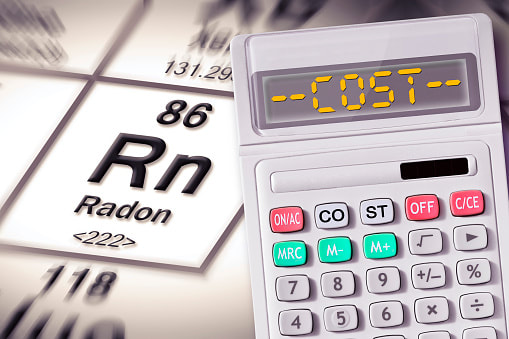
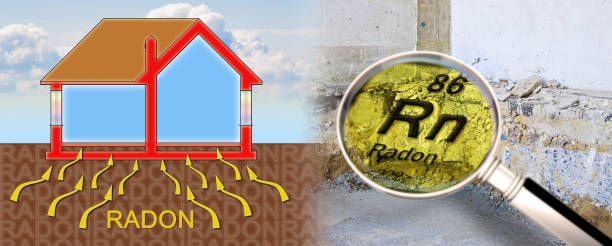

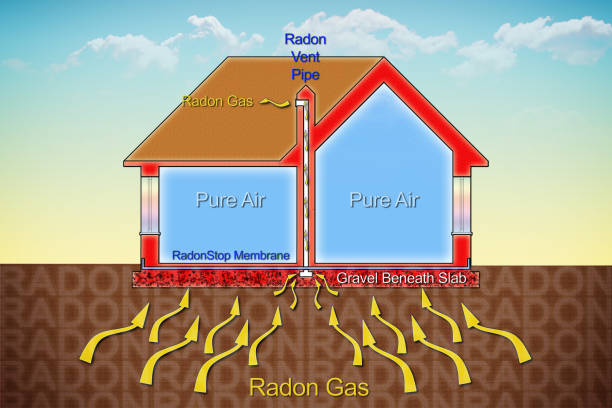
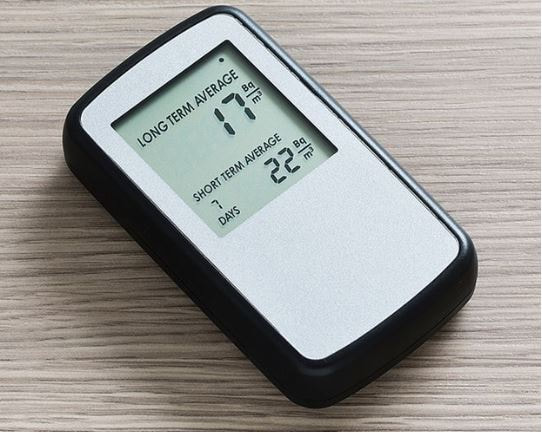
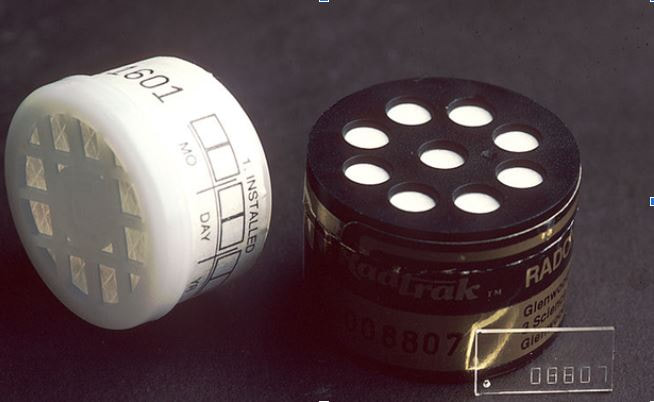
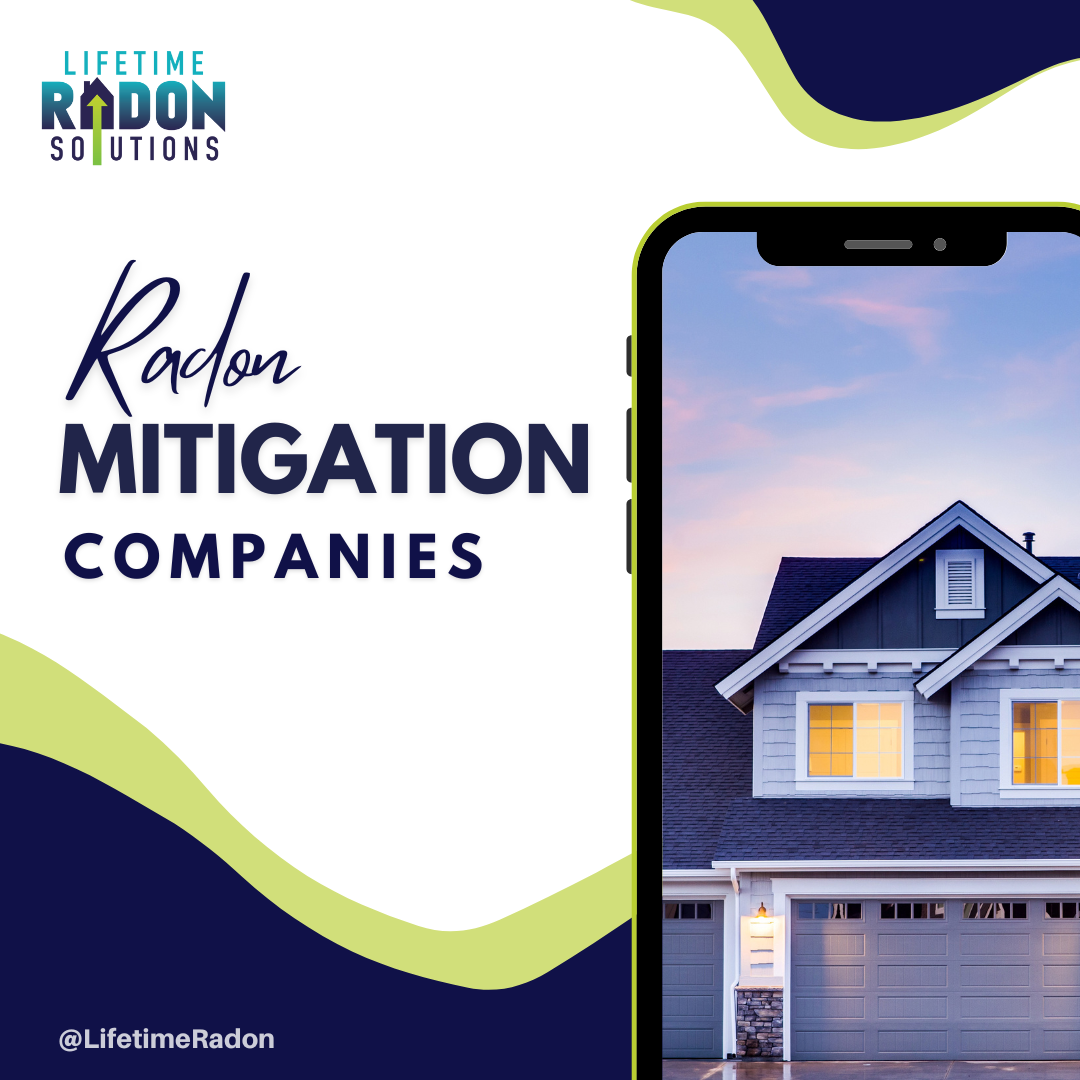

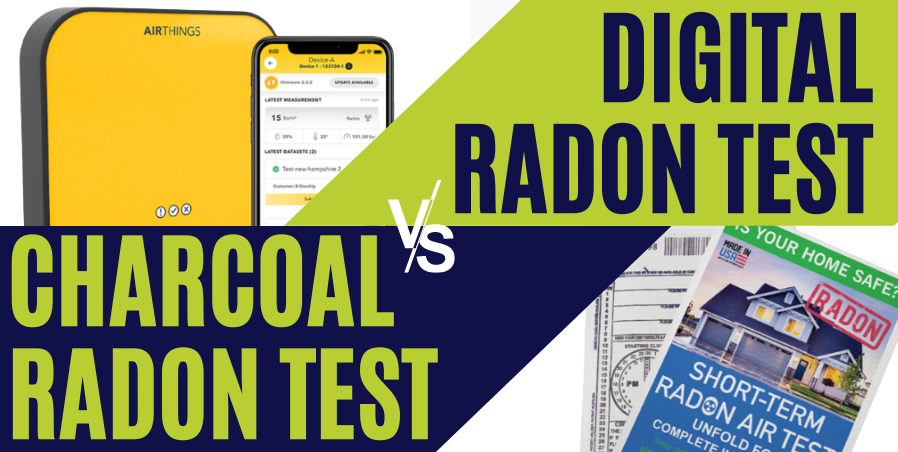
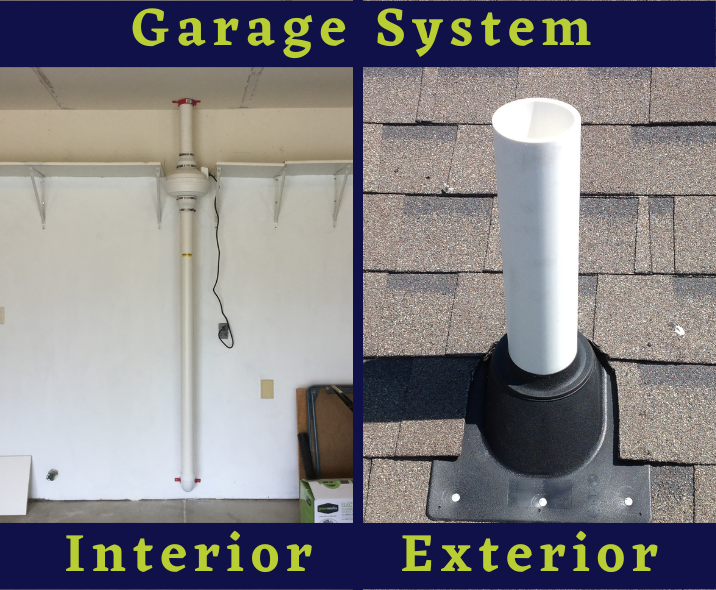
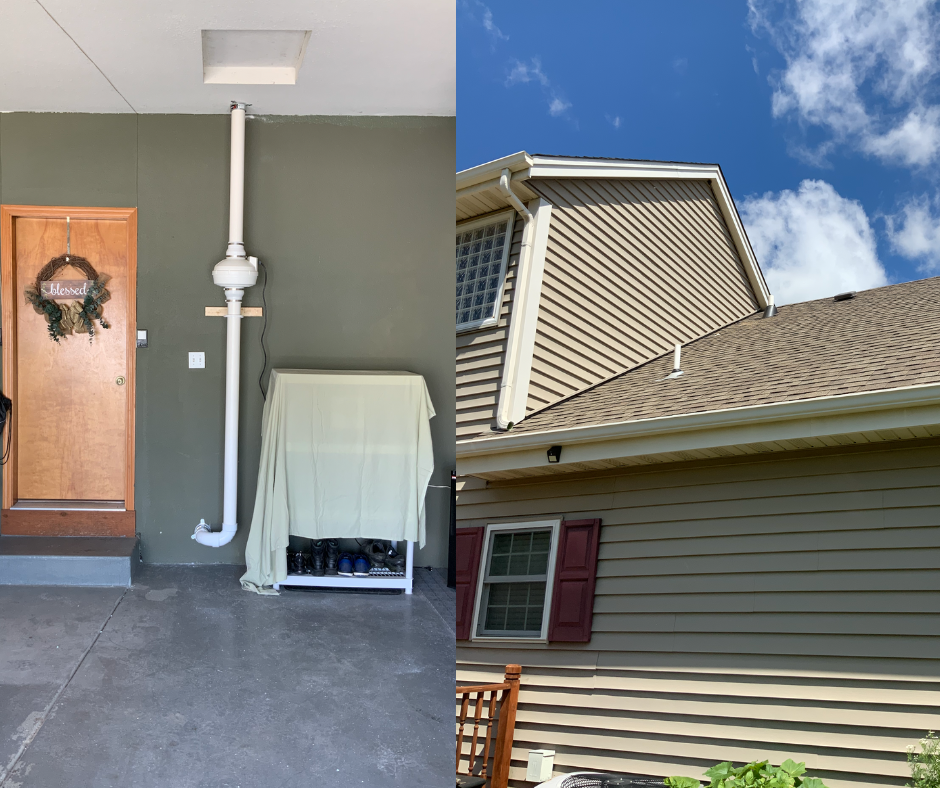
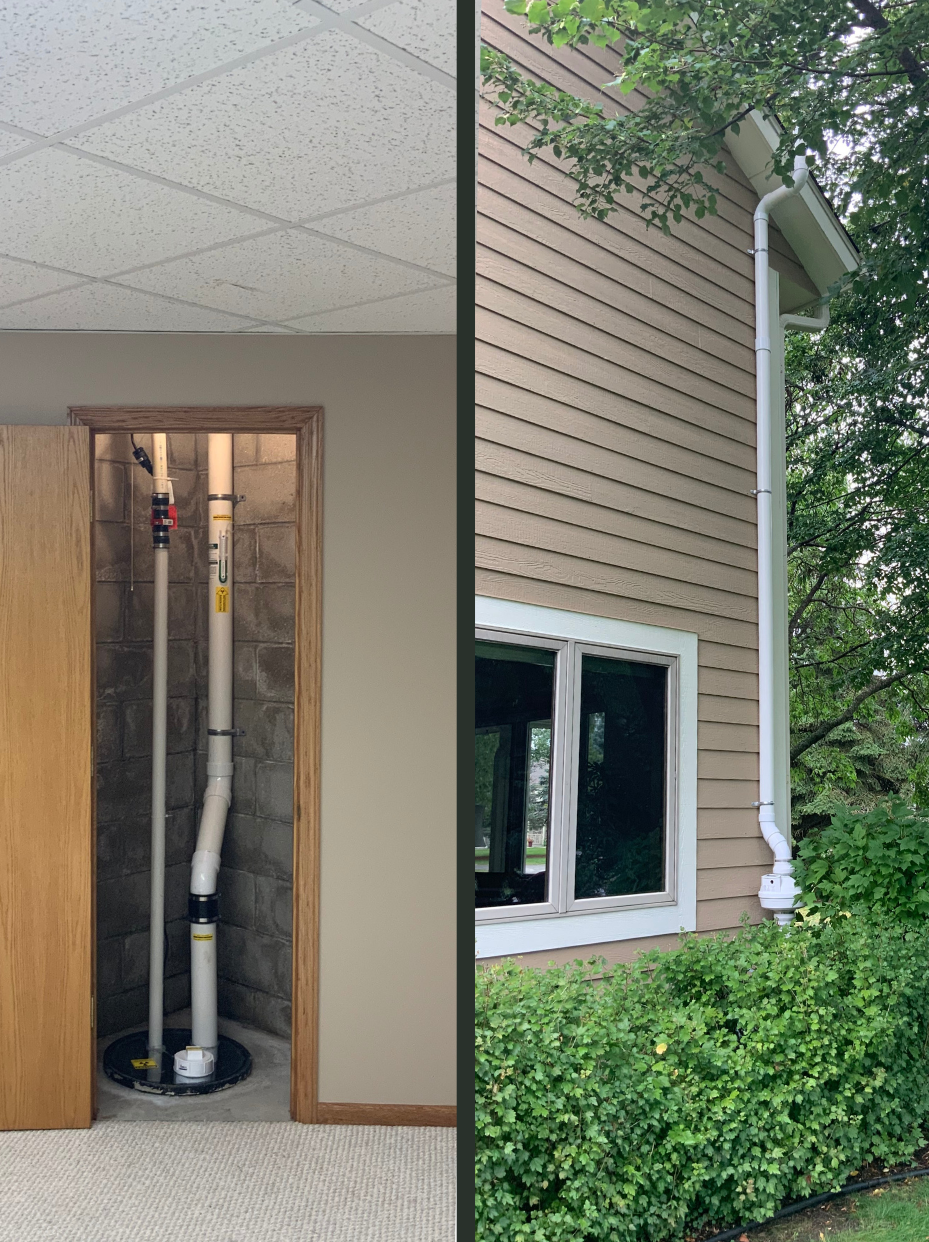
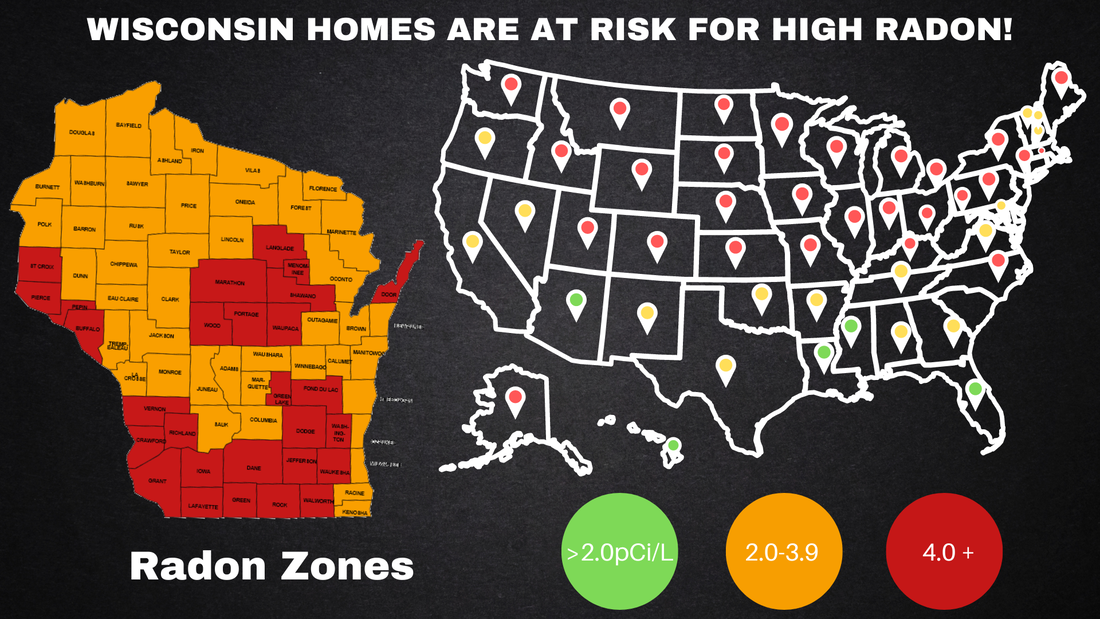
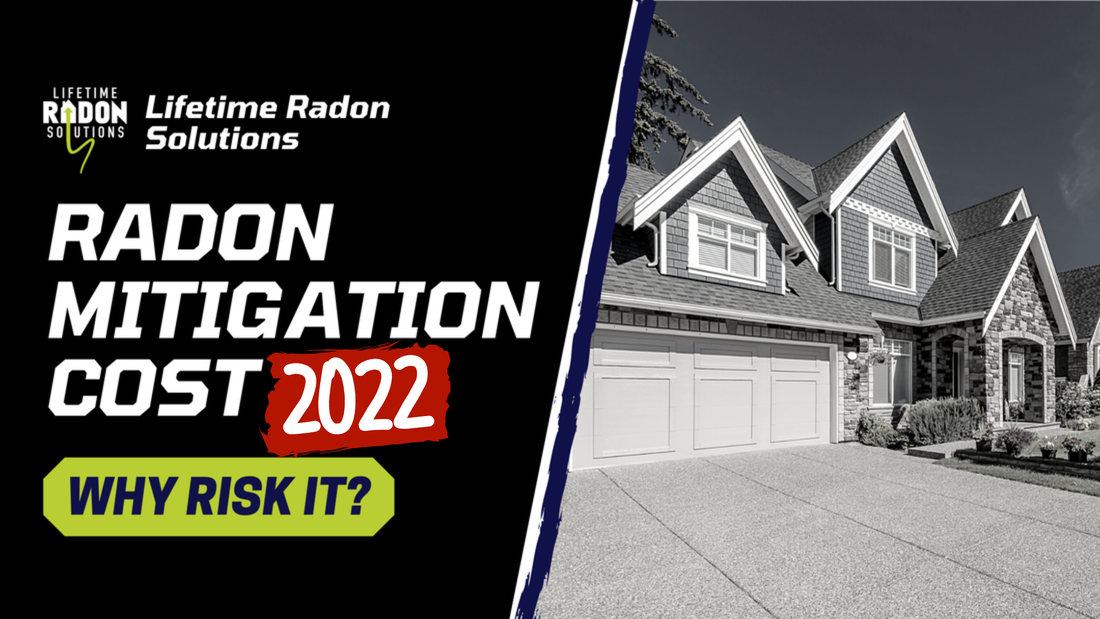
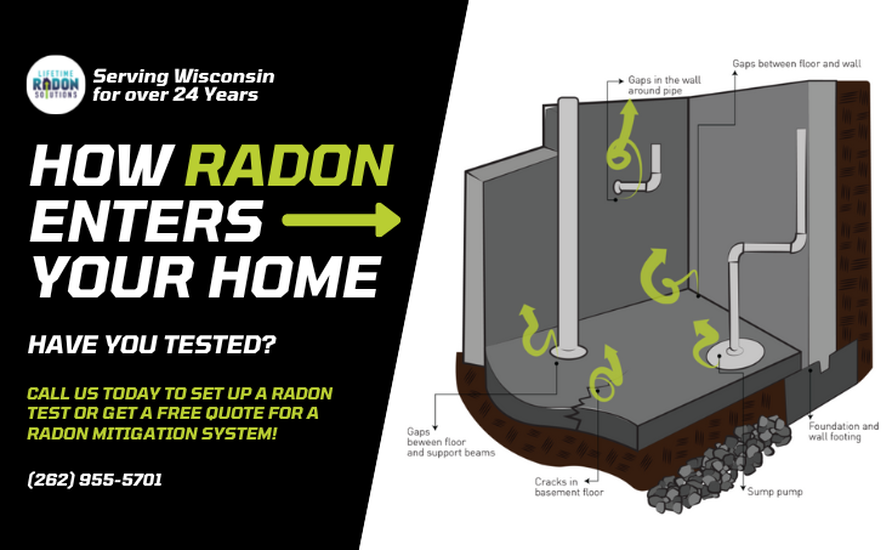
 RSS Feed
RSS Feed